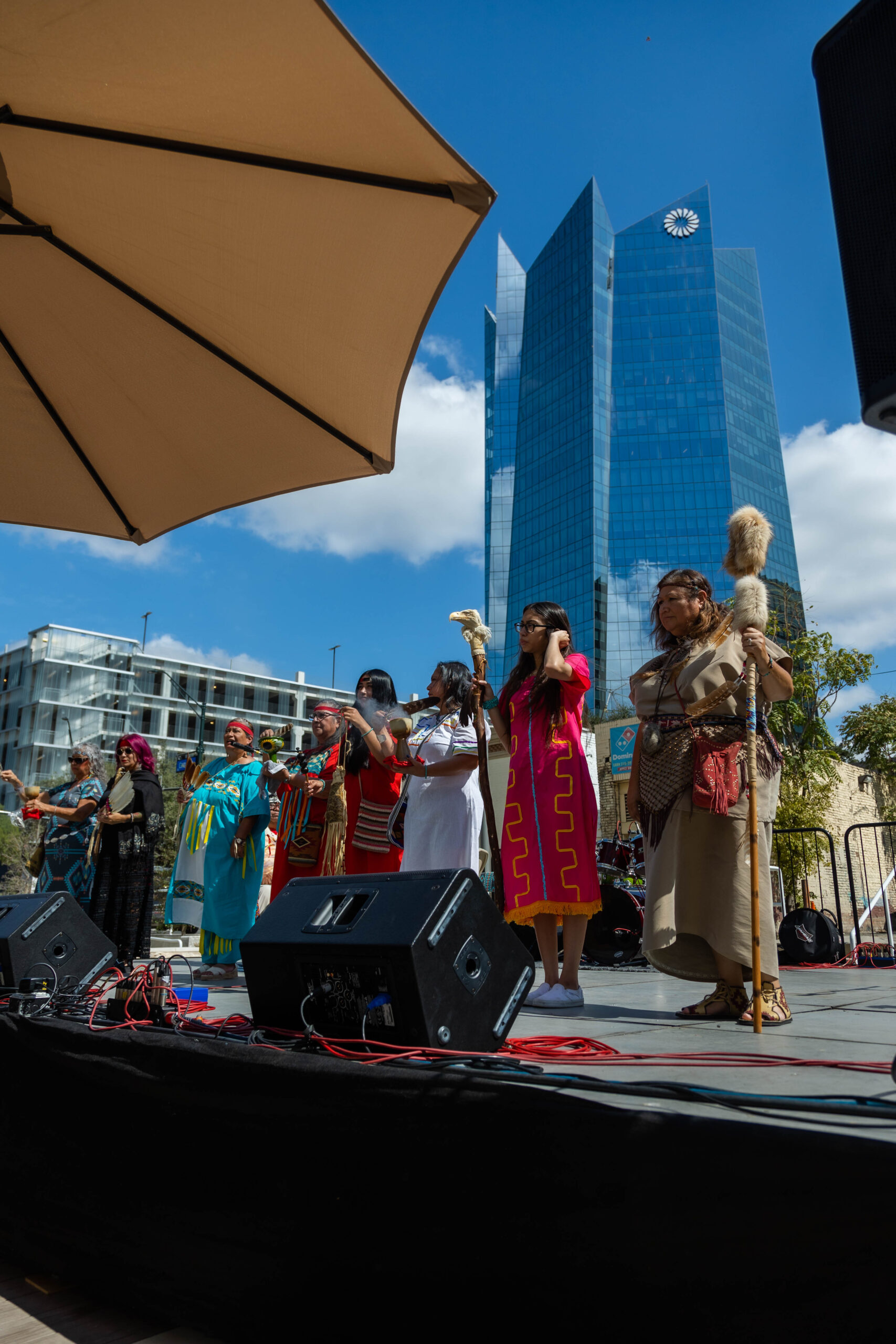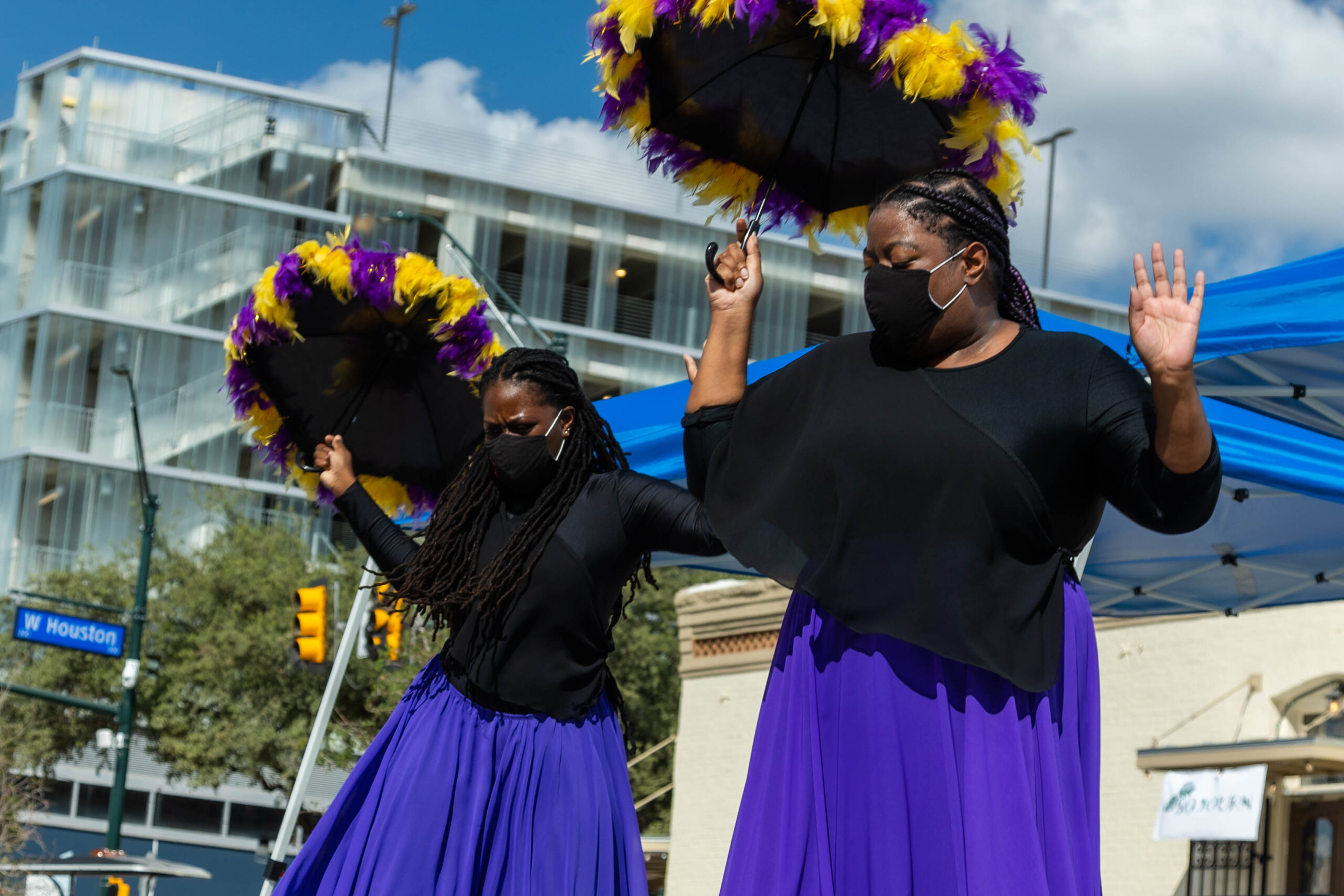About the Site
In early 2020, construction activities uncovered a series of foundations near the southwest corner of the W. Houston and Camaron Street intersection in Phase 1.2 of San Pedro Creek Culture Park. Through archival research, four components were identified to be associated with the foundations: Klemcke/Menger Soapworks, African Methodist Episcopal Church, Alamo Icehouse, and Alamo Icehouse & Brewery. The oldest component, dating from 1847-1859, was associated with soap making by two mid-nineteenth-century German immigrant families, the Klemckes and the Mengers. This component is hereafter identified as the soap factory.
Click here to read the US Army Corps of Engineers Draft Report
Meet the Site
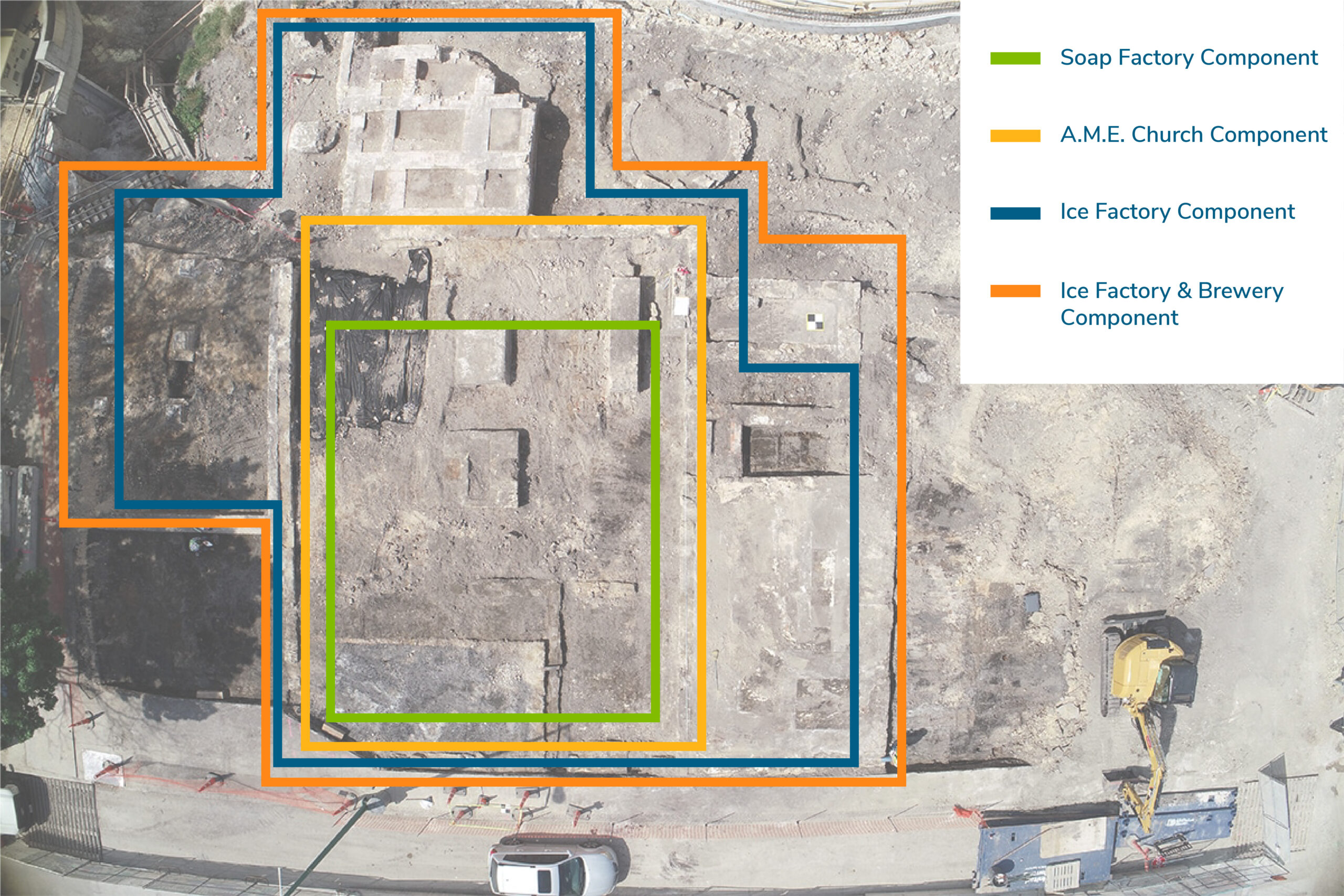
In 1871, the A.M.E. Church, known as St. James Chapel, began using a portion of the Klemcke/Menger Soap Factory for religious services. Located just south of Houston Street, the church fronted onto San Pedro Street (now Camaron Street) and backed up to San Pedro Creek. The congregation consisted of freedmen and formerly enslaved people who were seeking religious freedom and community after emancipation. The church served the African American population on the west side of town. In 1873, the trustees of the church purchased the property, and in 1875, they contracted with San Antonio builder A. Earhart to enlarge the building used for services.
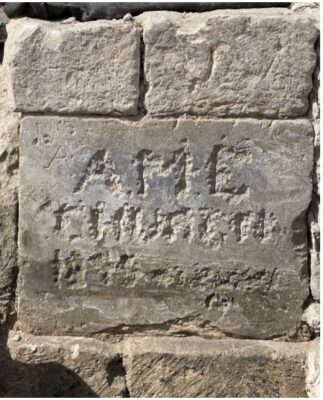
An extensive archaeological investigation later revealed the cornerstone of the St. James A.M.E. Church, which remarkably survived many years of development on this site. The cornerstone reads “AME Church 1875 28 JULY,” marking a tangible link to the thriving Reconstruction-era African American community.
After the Emancipation Proclamation reached Texas in 1865, a congregation of approximately one hundred formerly enslaved people and free African Americans came together in San Antonio under the African Methodist Episcopal Church. In 1871, they secured the former Menger Soap Factory on San Pedro Creek as their first physical meeting place. St. James became the first A.M.E. church in San Antonio, a beacon of hope and autonomy for the African American community. Its ministry emphasized political participation, education, civil rights, public service, and economic empowerment.
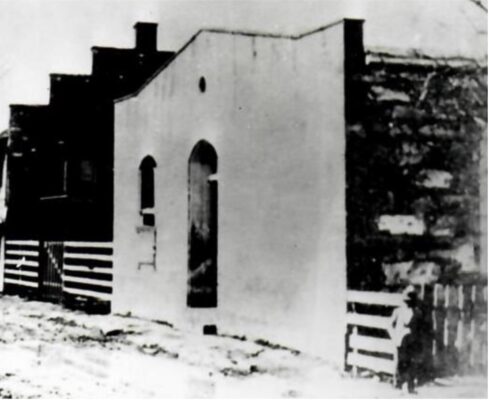
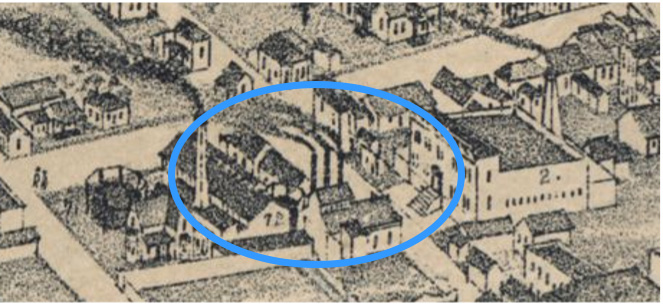
The site’s history continued with the development of the Alamo Ice Factory, which operated between 1878 and 1887. The factory introduced artificial ice production to the region, and in 1887, the Alamo Ice and Brewing Company was established at the site, becoming the first in the area to pair artificial ice making with commercial lager brewing. The Alamo Ice Factory is illustrated on an 1886 bird’s eye view map (#72), with the former St. James A.M.E. Church building also visible in the image.
Source: Augustus Koch, “Bird’s Eye View of San Antonio Bexar Co. Texas 1886. Looking North East.”
The integrity of the architectural elements and deposits was reviewed to assess the significance of these archaeological components and their eligibility for listing on the National Register of Historic Places (NRHP) and designation as State Antiquities Landmarks (SAL). Part of this discussion relied on the results of preliminary archaeological investigations conducted by Raba Kistner Inc. staff to uncover the site’s boundaries and assess some of its partially buried features. After extensive assessments, it was determined that disturbances had compromised the setting, feeling, and association of the two most recent components (Alamo Ice Company and Alamo Ice and Brewing Company).
Multiple community stakeholders downtown supported the need for a public gathering space that could accommodate events and programming below street level and in closer contact with the water. The discovery of the foundations led to the evaluation of design options that would incorporate them to varying degrees. A group of community leaders and history experts weighed in on the significance of the site.
Formerly a parking lot, the original design of the space was set to be the site of an amphitheater to pay homage to the adjacent Alameda Theater, a once vibrant entertainment center built for the Mexican-American community. In finding the historic foundations, careful assessment and community input have allowed this site to be rehabilitated as a gathering place to connect with its dynamic history.
Home to a richly layered story of a rapidly growing San Antonio, the foundations are a testament to the confluence of ethnic groups who have directly shaped the unique culture of San Antonio.
In October 2022, construction of Phase 1.2 was completed and opened to the public. Now dedicated as the St. James AMEC Culture Crossing, the name recognizes the church’s importance and the legacy of other cultures who have called San Antonio home. Today, the site has been preserved as a space for gathering like it did in the past.
Coming Soon
In August of 2023, the San Antonio River Foundation, the San Antonio River Authority’s non-profit partner, began the St. James AMEC Culture Crossing Design Enhancements project. This project is set to add interpretive elements and public art to reflect the cultural richness and importance of the archaeological site.



